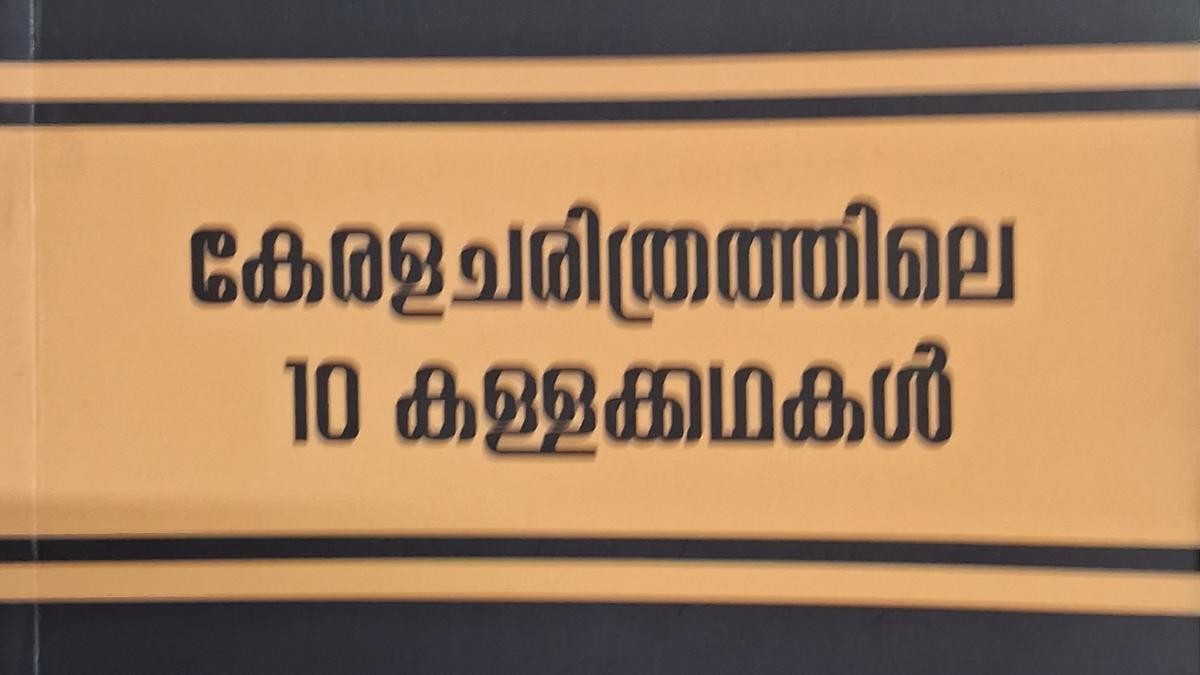
The front cover of Kerala Charithrathile 10 Kallakathakal
What is common to Parasurama and his axe, the apostle St. Thomas, Tipu Sultan and Pattanam? ‘Kerala’ would be the general consensus. As such, they were also part of a list of 10 ‘tall tales’ that historian M.G.S. Narayanan, who died on Saturday, once compiled with the advice that they be erased forever from the history books on Kerala.
The list contained oft-told ‘origin stories’ and compelling tales that even today go unchallenged in accounts on the region, but which, Prof. Narayanan said, should be discarded in favour of rigour and honesty in historical research.
Kerala Charithrathile 10 Kallakathakal (Ten tall tales in Kerala history) was published by DC Books as part of a series that marked the 60th anniversary of the formation of the State of Kerala.
No.1 and No.2 myths that were eligible to be jettisoned, according to him, were the stories of how Parasurama created Kerala with a throw of his axe and the arrival of St. Thomas in Kerala in AD 52. In the first case, Prof. Narayanan notes how early historians strived hard to convert the Parasurama story into historical fact through interpretations. In the case of the second, he observes how the story has persisted as historical fact despite the absence of proof.
On Mahabali and Onam
In his book, Prof. Narayanan describes the attempt to link the festival of Onam with the tale of the golden age when Mahabali ruled Kerala, listed as No.3, as at once dangerous, fantastic and a distortion of history. By creating an origin story for Onam, Brahminical betrayals and takeover of lands was conveniently glossed over, he wrote.
Other stories listed by Prof. Narayanan include the narrative of Rama Varma Kulasekharan, the last of the Cheraman Perumals, travelling to Mecca, Vasco da Gama’s landing at Kappad (Prof. Narayanan notes that he landed at Panthalayani Kollam) and the portrayal of Tipu Sultan as an anti-imperialist freedom fighter. The story of Pazhassi Raja taking his own life by swallowing a diamond ring to avoid capture, and the “distortion” of the 1921 Moplah Rebellion, also find a place on his list.
In his book, Prof. Narayanan rubbishes the ‘Kerala Model’ as a Left narrative carefully constructed around the ‘‘money order economy” founded on Gulf remittances.
Myth of Muziris
Story No. 10 is about how Pattanam, a village near North Paravur, was made out to be the ancient port of Muziris, despite the glaring absence of any conclusive evidence. “Archaeology cannot deceive. But archaeology directors who pose as such without being archaeologists are capable of any such deception,” Prof. Narayanan wrote then.
Published – April 26, 2025 06:49 pm IST
Anurag Dhole is a seasoned journalist and content writer with a passion for delivering timely, accurate, and engaging stories. With over 8 years of experience in digital media, she covers a wide range of topics—from breaking news and politics to business insights and cultural trends. Jane's writing style blends clarity with depth, aiming to inform and inspire readers in a fast-paced media landscape. When she’s not chasing stories, she’s likely reading investigative features or exploring local cafés for her next writing spot.




